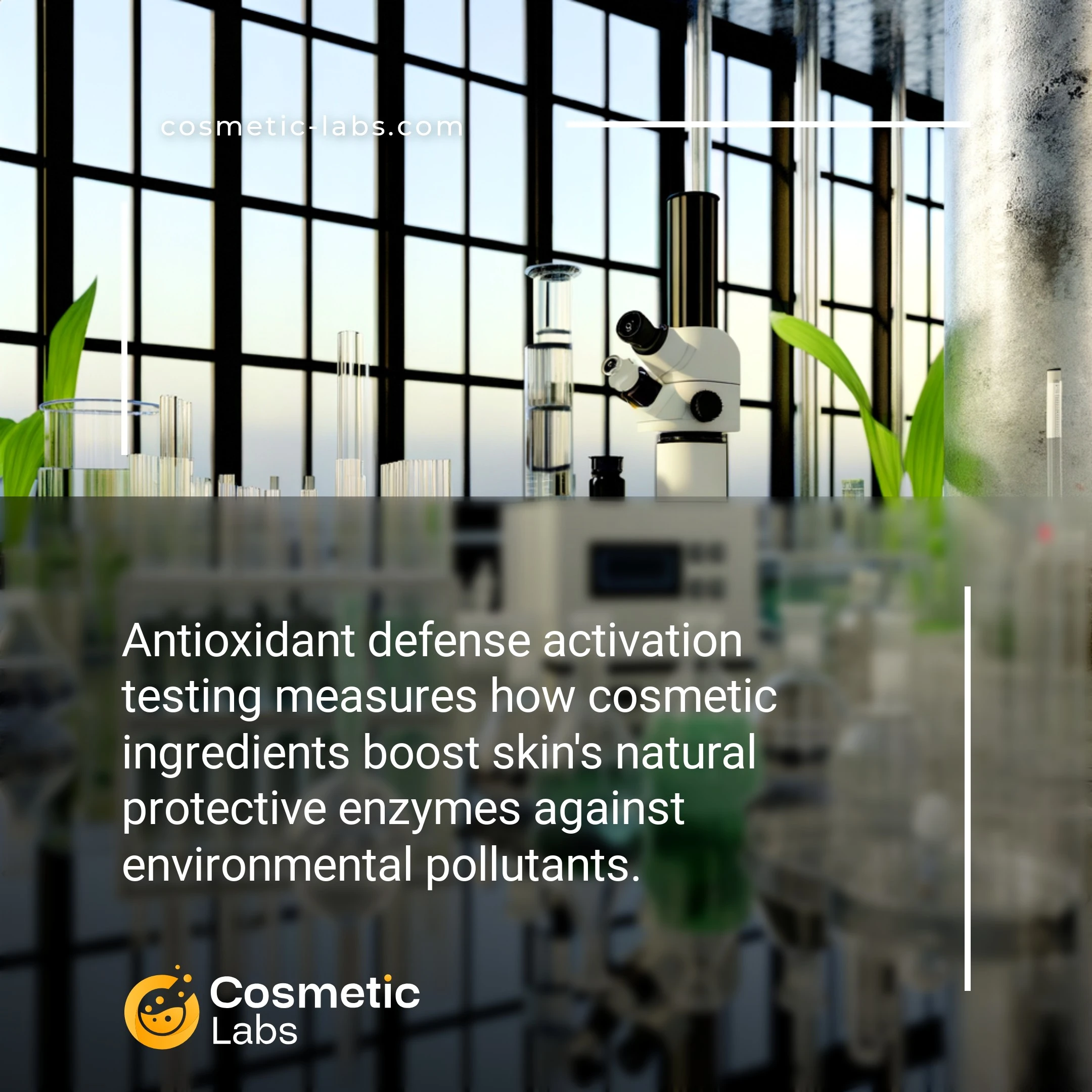Antioxidant Defense Testing for Pollutant Protection Claims

What is Antioxidant defense activation?
Antioxidant defense activation testing measures how cosmetic ingredients boost skin’s natural protective systems against environmental pollutants like PM2.5 particles and ozone. Labs use cellular assays to track glutathione production and catalase enzyme activity in skin models exposed to urban air contaminants. This testing reveals whether your formulation actually strengthens skin’s detox pathways or just claims antioxidant benefits on paper.
Why do you need this service?
Cosmetic labs use these assays to validate anti-pollution serum formulations by measuring how well active ingredients like vitamin C, niacinamide, and botanical extracts boost cellular antioxidant enzyme activity against urban pollutants. Brand owners rely on this data to substantiate marketing claims about environmental protection benefits, while R&D teams optimize ingredient concentrations based on specific pollutant exposure scenarios like traffic exhaust or industrial particulates.
Who provides Antioxidant defense activation services?
All cosmetic labs providing Antioxidant defense activation services
There is no company providing these services at the moment.
Antioxidant Defense Activation Testing for Pollutant Protection
Cosmetic labs now offer specialized antioxidant defense activation testing to validate how well your formulations protect skin from environmental pollutants. These services measure cellular defense mechanisms and oxidative stress response, helping brands develop products that actively shield skin from urban pollution, UV damage, and airborne toxins.
Cellular Response Measurement Protocols
Labs use advanced biomarker analysis to track how your ingredients activate skin’s natural defense systems. They measure key antioxidant enzymes like superoxide dismutase, catalase, and glutathione peroxidase activity levels. In vitro testing on keratinocytes and fibroblasts shows exactly how your formulation triggers protective responses.
Testing protocols include:
- Nrf2 pathway activation measurement
- Reactive oxygen species (ROS) scavenging capacity
- DNA damage protection assays
- Inflammatory marker reduction analysis
Pollutant Challenge Testing Methods
Professional labs expose treated skin models to controlled pollutant mixtures that mimic real-world urban environments. They test against particulate matter (PM2.5), ozone, nitrogen dioxide, and heavy metals. Results show how effectively your product prevents oxidative damage and maintains skin barrier function under stress.
Standard challenge tests measure protection against cigarette smoke extract, diesel exhaust particles, and blue light exposure. Labs provide quantitative data on lipid peroxidation reduction, collagen preservation, and cellular viability maintenance. This data supports anti-pollution claims and helps optimize active ingredient concentrations.
Connect with experienced cosmetic labs on our platform to access these specialized testing services for your pollutant protection formulations.
Applications of Antioxidant Defense Activation Testing for Pollutant Protection
Cosmetic labs use antioxidant defense activation testing for pollutant protection to validate how formulations shield skin from environmental stressors and strengthen cellular resilience.
Urban Skincare Product Development
Labs test serums, moisturizers, and protective creams designed for city environments where PM2.5 particles and ozone exposure damage skin daily. Testing protocols measure how formulations activate Nrf2 pathways and boost glutathione production in skin cells exposed to diesel exhaust particles.
Product developers use these results to optimize antioxidant concentrations in formulas targeting urban consumers. Testing typically shows 40-60% improvement in cellular defense markers when comparing treated versus untreated skin samples after 24-hour pollutant exposure.
Anti-Pollution Ingredient Validation
Raw material suppliers rely on defense activation testing to prove their botanical extracts, peptides, and synthetic compounds actually protect against environmental damage. Labs expose cultured skin cells to cigarette smoke extract, heavy metals, and UV radiation while measuring antioxidant enzyme activity.
These studies generate the efficacy data needed for ingredient marketing claims. Results help formulators select protective actives and determine minimum effective concentrations for their target pollution exposure levels.
| Test Parameter | Measurement Method | Typical Results |
|---|---|---|
| Nrf2 Activation | Immunofluorescence | 2-5x increase vs control |
| Glutathione Levels | Spectrophotometry | 30-80% elevation |
| SOD Activity | Enzyme assay | 25-65% boost |
| Cell Viability | MTT assay | 15-40% protection |
Ready to validate your formulation’s protective capabilities? Connect with experienced cosmetic testing labs on our platform to design custom antioxidant defense protocols for your specific product needs.
